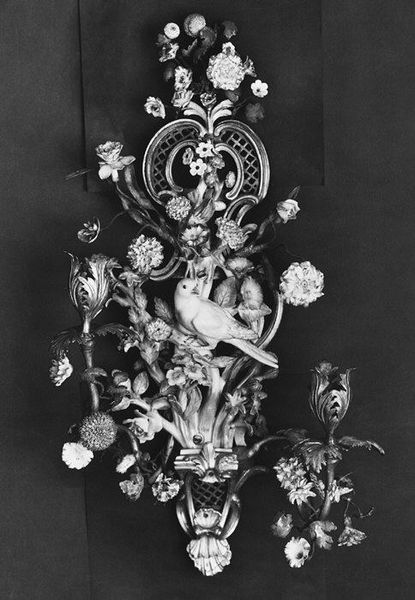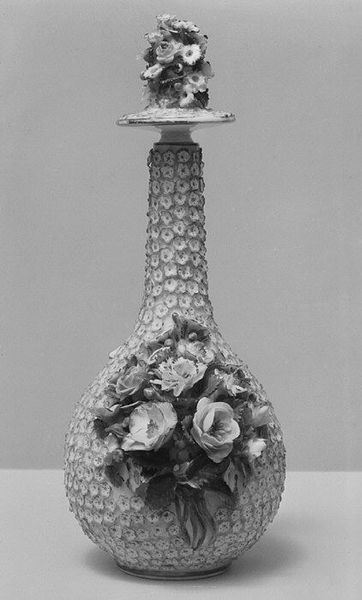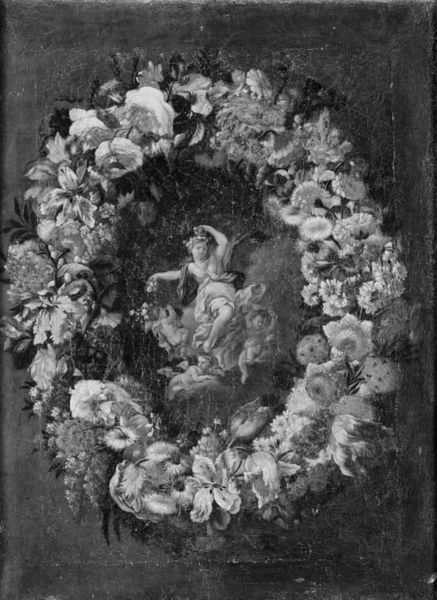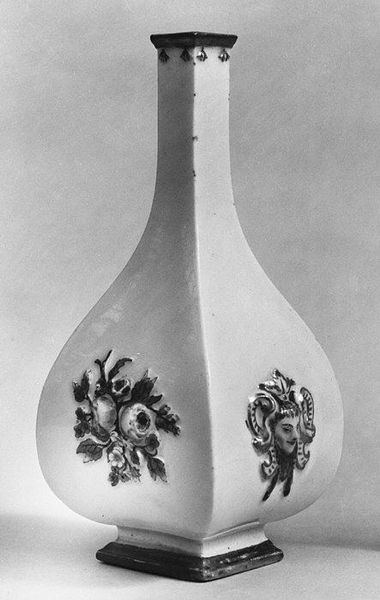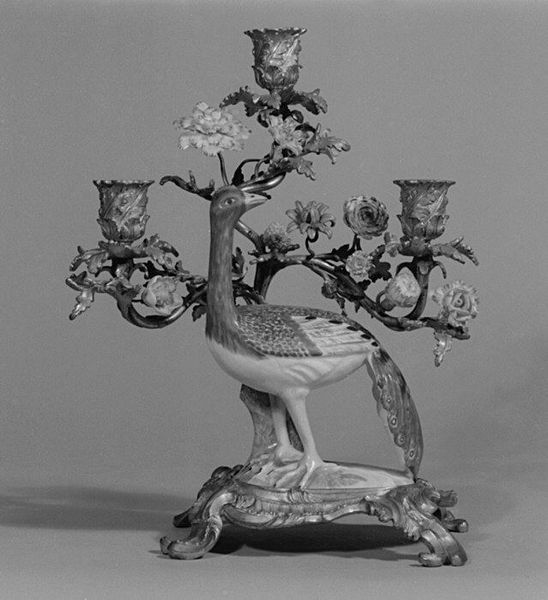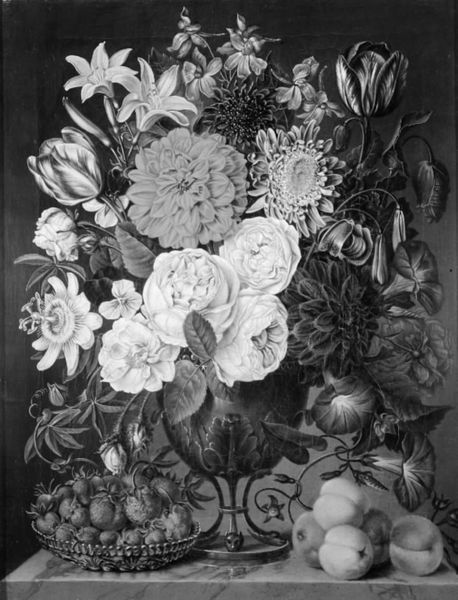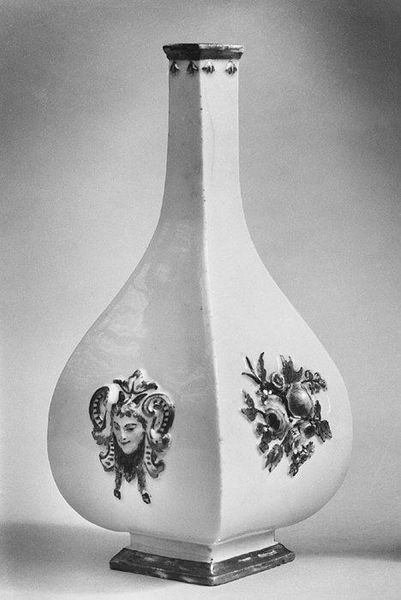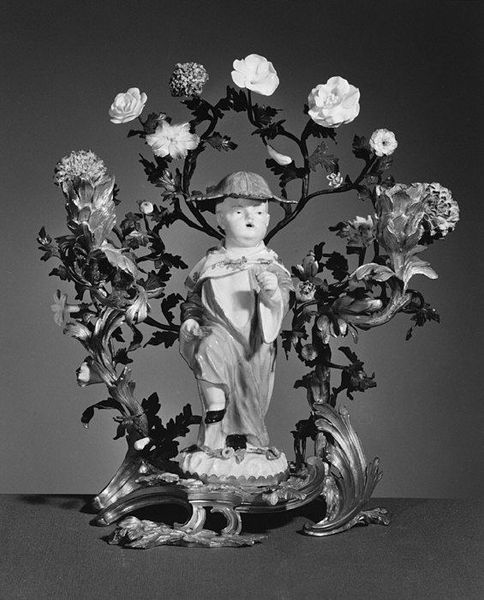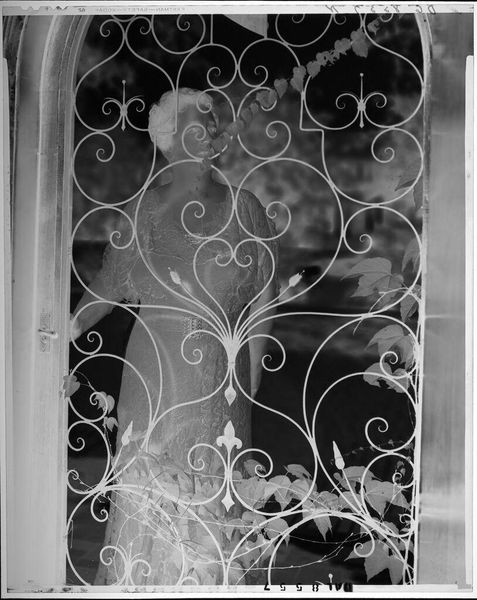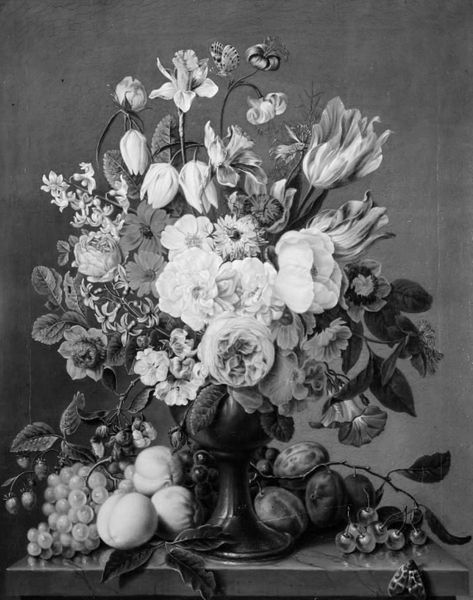
ceramic, porcelain, sculpture
#
baroque
#
sculpture
#
ceramic
#
bird
#
flower
#
porcelain
#
sculpture
#
decorative-art
#
rococo
Dimensions: 18 1/2 × 11 in. (47 × 27.9 cm)
Copyright: Public Domain
Curator: Oh, it’s gorgeous—utterly baroque, wouldn't you say? Editor: Well, that was my very first thought too...though maybe bordering on rococo? It feels a bit much, and in the best possible way, like stepping into a gilded dream. Curator: Precisely! We’re looking at a wall bracket crafted by the Meissen Manufactory, sometime between 1740 and 1750. Its medium is ceramic – more specifically, porcelain. Editor: Ah, porcelain—so delicate, so easily broken, yet here it is, frozen in flamboyant, joyous display. What kind of world produced this? Curator: A world steeped in courtly aesthetics and rife with socio-political disparities. Meissen porcelain, often emulating styles favored by the elite, served as a status symbol, subtly underscoring social stratification through material culture. These objects perpetuated ideals of refinement and luxury that often obscured systemic inequalities. Editor: Gosh! I'd been dreaming of palaces and silk cushions! This is when that innocent white bird and those abundant white blossoms now start whispering about inequality. Is that naive of me? Curator: Not at all! The floral arrangements and avian motifs are quite telling; they speak to a yearning for the pastoral but heavily idealized, divorced from the harsh realities of rural life experienced by those producing the very raw materials needed for Meissen. Editor: So this isn't just pretty, but almost propagandistic, like it performs certain beliefs, a cultural performance about power, and taste and artificial paradises. What should we make of the fact that these gorgeous objects, meant for candlelight, also participate in making shadow? Curator: The decorative arts often engage in such complex negotiations! By interrogating what appears "beautiful", we engage in discussions that speak directly to issues of wealth, taste, labor and its place within historical discourse. Editor: Food for thought indeed! It makes me want to look harder at other artworks of that time and ask myself not just if something is pretty, but whom it’s actually *for.* Curator: A worthy task! Remember, objects of art act as cultural artifacts. Let them lead your research and reflections!
Comments
No comments
Be the first to comment and join the conversation on the ultimate creative platform.
